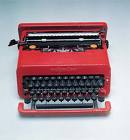This thread of thought bounced from Zeldman to Buxton to Gillmor.
Jeffrey Zeldman wrote a post about how Apple should hire itself out to fix the awful state of user interface in a number of devices. My immediate reaction was that there’s no reason that good UI should be unique to Apple. Jobs and Ive just start at a different point than most manufacturers. The question really comes down to where the power lies with regard to design thinking in an organization, and at what level design decisions are made (or not made). At Apple the answer is very clear.
This lead me to a lecture by Bill Buxton at Stanford’s HCI program. I wasn’t able to attend in person, but a video of Buxton’s lecture is available through iTunes University. Buxton’s lecture provides the link between industrial design and software interface design– the interface is now part of the form factor. Buxton has been hired to change the design culture of Microsoft. That’s a tall order, but I give them credit for bringing Buxton on board. His ideas about understanding the transitions between states, and the journey from sketching to prototype are very important.
Steve Gillmor chronicles the transition of software applications from the hard drive to the cache / cloud. His latest prediction is that Silverlight will become the rich internet application runtime of choice for the new MacBook Air and the iPhone. Clearly it won’t be Flash or Java. The Ajax apps are already there, but more richness is always better. If Microsoft plays it right, they could find a path into their next incarnation. MS Office may be dead, but Ray Ozzie’s Live Office is yet to be born.
The reason that no phone or computer manufacturer can compete with Apple is they don’t understand what design thinking is or why it’s important to their organization. Phones are designed by a set of pipes, the telecommunications network makes the design decisions. Computer and software interface design is still dominated by the hardware, it’s designed back to front. Until the value of design is understood, and the hardware stops designing the software, Apple will have no competition. It’s all about the ratio of features to features used. Apple leads the field by a mile.
Comments closed

